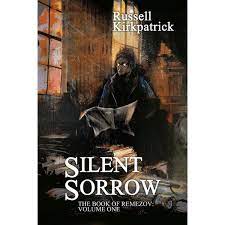Title: A Feather So Black
Author: Lyra Selene
Publisher: Hachette/Orbit, 2024; RRP: $32.99
Lyra Selene is the author of the YA duology Amber & Dusk. A Feather So Black is her debut adult novel. She lives in New England with her husband and daughter.
Fia is a changeling left in place of the stolen High Queen’s daughter. The High Queen trains her to be a weapon. Fia, although eight years old when left in the princess’s place, has no memory of before. She is obviously not human but she looks like the human princess, Eala, except for her sable hair and two different-coloured eyes. She has an affinity with the forest and plants. Her only friend is Prince Rogan, Eala’s betrothed.
Rogan and Fia find a forgotten gate to Tir na nOg and set out over almost a year (they can only cross over one night a month at the full moon) to break Eala’s curse and free her. Fia also has to find a Treasure. Early in the story Fia has a Folk creature ask her to “Mend the broken heart. End the sorrow. Give what life is left, so we may see the morrow.” This neatly sums up Fia’s ultimate task.
The fantasy element adheres closely to Celtic tales of the Fair Folk and I only wished I’d thought to look for a glossary first instead of making up my own pronunciation for Gaelic names such as Eala and Irian. (The glossary is at the back of the book and I didn’t find it until I’d finished the story.)
The romance is equally important to, and bound up in, their quests. Fia’s tasks are complicated by her feelings for Rogan and her growing feelings for the dark Folk Gentry, Irian, who while seeming more monster than man reveals a better understanding of Fia’s nature than anyone else. Fia also learns to understand and accept her own self as her character develops and deepens throughout the story.
There is sex and violence and all that the fantasy aficionado could ask for along with a strong and steamy romantic element.
The book is 466 pages long but the writing is evocative and a pleasure to read, as this excerpt shows:
“Inside the tiered grotto surrounding the greenhouse, the world had cracked open, letting light inside. Winter branches were furred with new leaves. Crocuses in red and purple lolled their heads. The air smelled of moss and fresh beginnings.”
I thoroughly enjoyed this tale and my only regret is that I now have to wait for the second instalment, A Crown So Silver, Book 2 of The Fair Folk.
Reviewed by: Marian Chivers, April, 2024
Ballarat Writer Inc Book Review Group
Review copy provided by the publisher
- Marian Chivers has a lifelong interest in reading and writing with her work and study involving books from children’s literature to postgraduate studies.



